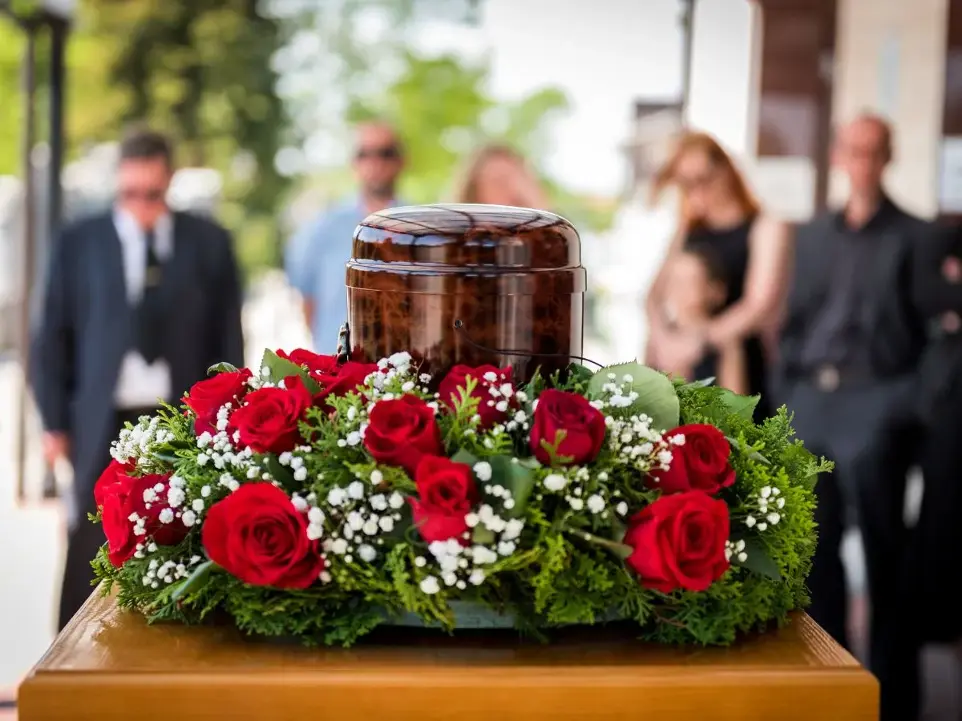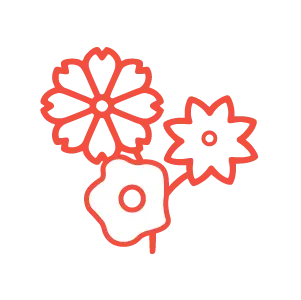Funeral Lei Guide
Honoring Traditions with Respect and Love

When attending a Hawaiian funeral, it’s important to understand local customs and the significance of traditional elements like the lei. Hawaiian funerals are often a blend of modern and traditional practices, reflecting the rich culture of the islands. This guide will help you navigate funeral etiquette, attire, and the unique role that leis play in the ceremony.
In this guide:
- Hawaiian Funeral Services: A Celebration of Life
- Funeral Etiquette: Blending Tradition with Modernity
- Understanding Funeral Leis: A Symbol of Love and Respect
- Choosing the Right Lei for a Funeral
- Additional Considerations for Selecting a Funeral Lei
- Conclusion: Honoring Life and Tradition
Hawaiian Funeral Services: A Celebration of Life
Unlike the more somber tone of Christian funerals, Hawaiian funerals are often centered around celebrating the life of the deceased. While grief is expressed, it is common to see attendees singing, dancing, and sharing lighthearted stories about the person who has passed away. This approach brings warmth to the gathering, honoring the memory of the deceased through joy and shared remembrance.
Funeral Etiquette: Blending Tradition with Modernity
In Hawaii, funeral etiquette combines elements of both old customs and new practices. While some funerals may follow Western traditions, such as formal black attire, others embrace the vibrant Aloha spirit.
- Attire: Guests should inquire with the family regarding the dress code, which can range from formal attire to casual Aloha wear. The latter often includes colorful Hawaiian shirts or floral dresses, reflecting the vibrant culture of the islands.
- Courtesy: As a guest, respect for the family’s wishes and cultural norms is essential. Always check the specific type of service, so you can dress and behave appropriately.
Understanding Funeral Leis: A Symbol of Love and Respect
Leis are an integral part of Hawaiian funerals, symbolizing love, respect, and the circle of life. The act of exchanging leis honors the deceased and their family, enveloping them in the spirit of Aloha—both in hello and in a final goodbye.
- Wearing a Lei: Wearing a lei during the service is a gesture of respect for the deceased. The lei may be worn by attendees, draped over a casket, or placed around a photo of the deceased.
- The Lei-Throwing Tradition: After the funeral, leis may be left in a place that was meaningful to the deceased or tossed into the ocean as a way of honoring their memory. Some individuals remove the flowers from the lei and scatter them in the water, adding a personal touch to this symbolic gesture.

Choosing the Right Lei for a Funeral
When selecting a lei, consider the symbolic meaning behind different types of flowers and foliage. Some popular choices for funerals include:
- Maile Lei: Traditionally worn during funerals, the maile lei is an open-ended lei made from a sweet-scented vine. It represents respect and is often used to drape caskets or photo frames.
- Ti-Leaf Lei: Known for bringing good luck, the ti-leaf lei is another popular option, symbolizing strength and protection for both the deceased and the family.
- Pikake and Orchid Leis: Fragrant and elegant, these leis signify love, friendship, and eternal connection, making them a meaningful choice for funeral services. Our Specialty Lei category offers heartfelt options to honor and remember loved ones with a beautiful tribute that reflects Hawaiian tradition.
- Hala Lei: The Hala Lei holds a special place in Hawaiian culture, particularly at funerals. Made from the bright orange fruit of the Hala tree, it symbolizes the end of a journey, making it a fitting tribute for a final goodbye. Due to agricultural restrictions, these leis can only be delivered locally within Hawaii.
Additional Considerations for Selecting a Funeral Lei
- Allergies: Consider any potential allergies the recipient or other attendees may have when selecting fragrant leis.
- Agricultural Restrictions: Keep in mind that certain leis, such as the Hala Lei, cannot be shipped to the mainland due to agricultural regulations.
- Open Leis: Some traditions prefer open-ended leis for funerals, symbolizing the continuation of the journey rather than closure.
Conclusion: Honoring Life and Tradition
Incorporating leis into Hawaiian funeral ceremonies is a powerful way to honor the deceased while respecting local customs. Whether you choose a fragrant flower lei or a simple vine, your gesture will convey love and respect. By understanding these traditions, you can participate in these sacred proceedings with grace and thoughtfulness.
Final Tips for Attending a Hawaiian Funeral:
- Always check with the family or funeral home regarding attire and ceremony expectations.
- Wearing or giving a lei is a deeply respectful way to show support for the family.
- Leis can be left on caskets, placed around photos, or thrown into the ocean as a tribute.
By adhering to these traditions, you not only pay your respects but also participate in a ceremony deeply rooted in Hawaiian culture and aloha.




